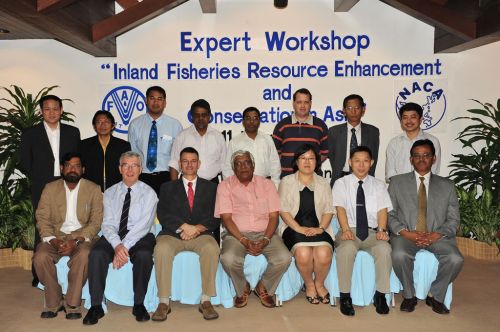Expert Workshop on Inland Fisheries Resource Enhancement and Conservation in Asia

FAO and NACA convened an expert workshop to review inland fisheries resource enhancement and conservation practices in Pattaya, Thailand, 8-11 February. Experts from 10 Asian countries attended the meeting to share experiences and lessons learned.
Over the past few decades inland fisheries resources have come under increasing pressure from water engineering projects, pollution and overfishing. This has lead to an alarming decline in the natural populations of many important inland fish species in Asian countries, with implications for the economic welfare and nutrition of millions of people that are dependant on these resources, for the environment, and also for the aquaculture industry that depends on the genetic resource base. Regional collaborative efforts are required to facilitate assessment of current inland fisheries resource enhancement and conservation practices, and there are transboundary coordination issues for countries that share rivers.
Copyright, all rights reserved.
